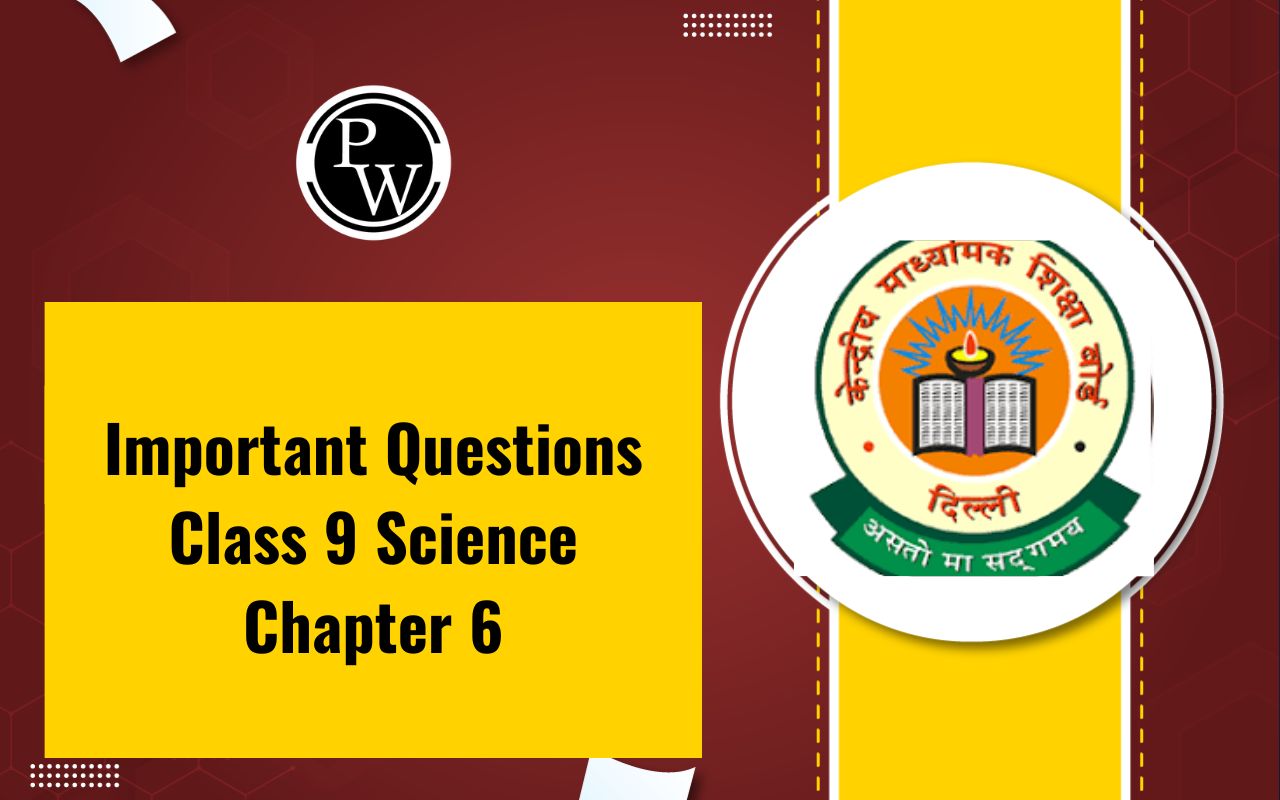
CBSE Class 9 History Notes Chapter 5 Overview
Variations in the contemporary world have varying effects on pastoral communities across the globe. New boundaries and rules had an impact on their mobility patterns. It gets harder for pastoralists to roam around in search of pastures, and grazing becomes challenging. Cattle perish in significant quantities during a drought. Pastoralists do, however, change with the times. They alter the routes of their yearly migration, decrease the number of cattle they own, demand the right to access new territories, put political pressure on the government to provide aid, subsidies, and other forms of support, and demand the management of forests and water resources.CBSE Class 9 History Notes Chapter 5 PDF
Here we have provided CBSE Class 9 History Notes Chapter 5 for the ease of students so that they can just download the pdf and use it easily without the internet. These CBSE Class 9 History Notes Chapter 5 will help students understand the chapter better.CBSE Class 9 History Notes Chapter 5 PDF
CBSE Class 9 History Notes Chapter 5
Here we have provided CBSE Class 9 History Notes Chapter 5 for the ease of students so that they can prepare better for their exams.Pastoral Nomads and their Movements
In the Mountains
The Gujjar Bakarwals of Jammu and Kashmir moved to the mountains in the eighteenth century to find pastures for their livestock. They relocated to the Siwalik range's low hills over the winter. They started their northern march towards their summer grazing pastures at the end of April. We call this voyage a kafila. By the end of September, they were marching once more, this time to their winter base. There was a similar seasonal migratory pattern among the Gaddi herders of Himachal Pradesh. The Gujjar cow herds from even further east traveled up to the high meadows known as the Bugyals in the summer and down to the dry forests of the Bhabar in the winter. Numerous Himalayan pastoral cultures, such as the Bhotiyas, Sherpas, and Kinnauris, followed this pattern of seasonal migration between summer and winter pastures.CBSE Class 9 Books for Preparation
On the Plateaus, Plains and Deserts
In India's plains, deserts, and plateaus, pastoralists were also prevalent. The Dhangars were a significant pastoral group in Maharashtra, mostly comprising of shepherds, blanket weavers, and buffalo herders. They used to reside in Maharashtra's central plateau during the monsoon. The Dhangars relocate to the west and harvest their bajra by October. Konkani villagers welcomed them when they arrived in Konkan. The fields need to be fertilized and prepared for the rabi harvest after the Kharif harvest is cut. The parched central plateau of the states of Karnataka and Andhra Pradesh was covered in grass and stone, and it was home to goats, sheep, and cattle herded by sheepherders known as Gollas. The Kurubas and Kurumas sold woven blankets and raised sheep and goats. They relocated to the coastal regions during the dry season, leaving when the rains arrived. Another well-known community of graziers that could be found in the villages of Madhya Pradesh, Maharashtra, Punjab, Rajasthan, and Uttar Pradesh were the Banjaras. Raikas inhabited Rajasthan's deserts. The Raikas of Barmer, Jaisalmer, Jodhpur, and Bikaner stayed in their villages during the monsoon season since there was pasture there. They left around October in search of fresh pastures and water, only to come back during the ensuing monsoon. Numerous elements supported the existence of pastoral groups. They had to make decisions about the length of time the herds could stay in one place and where to locate forage and water. To go through various territories, they had to make sure they could time their movements correctly. For the herds to graze in harvested fields and fertilize the soil, they had to establish relationships with farmers along the way.Colonial Rule and Pastoral Life
Under colonial control, the lives of pastoralists were drastically altered. Their freedom of movement was restricted, their access to grazing areas was limited, and their required payments rose. Their skills and trades suffered, and even their agricultural stock decreased. It took place for the reasons listed below: One of the colonial state's primary sources of funding was land revenue. Therefore, the colonial authority sought to convert all grazing areas into farmed farms to improve agricultural production and revenue. Every area that wasn't farmed was considered a "wasteland." Waste Land Rules were implemented in different regions of the nation starting in the middle of the 1800s. Uncultivated lands were seized and given to chosen people under these regulations. Many provinces were passing distinct Forest Acts by the middle of the 1800s. These Acts designated certain forests as "Protected," while others that produced commercially important timber, such as sal or deodar, were designated as "Reserved." Pastoralists' lifestyles were altered by these forest acts since they made it illegal for them to enter numerous forests. Nomads aroused the suspicions of British authority. Overseeing a settled populace was the goal of the colonial administration. The Indian colonial government enacted the Criminal Tribes Act in 1871. Numerous communities of traders, artisans, and pastoralists were designated as Criminal Tribes under this Act. It was claimed that they were born criminals. Land, canal water, salt, trade items, and even animals were subject to taxes. throughout the middle of the 1800s, a grazing tax was imposed throughout the majority of India's pastoral areas. Contractors were auctioned off the right to collect the tax in the decades between the 1850s and the 1880s. The government started obtaining taxes directly from pastoralists around the 1880s.How Did These Changes Affect the Lives of Pastoralists?
There were not enough pastures as a result of these actions. The amount of pastureland that was available decreased when grazing areas were taken over and converted to agricultural fields. The remaining grazing land was all that was left over for the animal population to eat as pasturelands vanished beneath the plow. The quality of pastures decreased as grazing fields were used continuously after restrictions on pastoral movements were put in place. This further reduced the amount of forage available to animals, which further depleted the animal population.How Did the Pastoralists Cope with These Changes?
Pastoralists responded differently to these developments. Some of the livestock found new pastures, and they decreased the quantity of cattle. Raikas were camel herders who used the banks of the Indus to feed their camels, but after 1947, the new political boundaries between India and Pakistan prevented them from doing so. Over time, a few wealthy pastoralists gave up their nomadic lifestyle and purchased land. While some became peasants via farming, others engaged in trade. However, to survive, impoverished pastoralists took out loans from moneylenders. They have multiplied in numerous areas and have persisted in surviving. Pastoral communities were compelled to change their ways of life in many other parts of the world due to changing laws and settlement patterns.Pastoralism in Africa
More than 22 million Africans still rely on pastoral work as their primary source of income. African pastoralists' lives have undergone significant alteration over the colonial and post-colonial eras, much like those of pastoralists in India.Where Have the Grazing Lands Gone?
Maasailand, before colonization, covered a wide region that spanned from northern Kenya to the steppes of northern Tanzania. It was divided in half in 1885 by the international boundary that separated German Tanganyika from British Kenya. Following the cut, white settlers progressively occupied the best grazing pastures, driving the Maasai into a tiny region in northern Tanzania and southern Kenya. The British colonial authority in East Africa encouraged the indigenous peasant populations to increase their agricultural output starting in the late nineteenth century. The Maasai pastoralists held political and economic dominance over their agricultural neighbors before colonization. The Maasai were forced to live on a tiny amount of land, which was put under strain by the loss of the best grazing fields and water resources.The Borders are Closed
African pastoralists may travel across great distances in quest of pastures in the nineteenth century. However, starting in the late 1800s, the colonial authority started putting certain limitations on their freedom of movement. Pastoralists were perceived as dangerous and barbaric by European colonists and White settlers. The pastoralists' lives were abruptly altered by the new borders and restrictions placed upon them, which hurt their trading and pastoral endeavors.When Pastures Dry
Drought affected pastoralists' lives worldwide. For this reason, pastoralists have historically relocated to weather difficult times and avert emergencies. However, starting with the colonial era, the Maasai were forced to live in a reserve, restricted to a set region, and were not allowed to go in search of pastures. The negative effects of the droughts got worse as the area of grazing areas decreased.Not All Were Equally Affected
Not every pastoralist in Maasailand was equally impacted by the changes brought about by colonialism. Maasai society was split into two social classes before to colonization: warriors and elders. The community's governing body was composed of the elders, who convened regularly to decide on matters and resolve conflicts. Younger individuals made up the warriors, who were mostly in charge of guarding the tribe, defending the neighborhood, and planning cattle raids. Several policies implemented by the British had a significant impact on how the Maasai were governed. They named Maasai leaders from several subgroups, and these individuals were given command over the tribe's operations. Warfare and raiding were also subject to limitations. These chiefs have survived the destruction caused by both drought and war. However, the impoverished pastoralists' life stories were distinct. They lost almost everything during times of conflict and famine. They had to head into the towns in search of employment. Some used to make a living by burning charcoal, while some did odd jobs. There were two levels to the Maasai society's social transformation. First, if it did not completely collapse, the age-based divide that had historically existed between elders and warriors was disrupted. Second, a new divide emerged between pastoralists who were wealthy and those who were not.Benefits of CBSE Class 9 History Notes Chapter 5
Studying CBSE Class 9 History Notes Chapter 5 on "Pastoralists in the Modern World" offers several benefits: Clear Understanding of Pastoralism : It helps in grasping the concept of pastoralism, which is the primary focus of the chapter. Students learn about pastoral communities, their way of life, and their interaction with modern developments. Historical Context : Provides insights into how pastoralism has evolved, particularly in the context of the modern world. This includes understanding the impact of colonialism, globalization, and modernization on pastoral communities. Cultural Insights : Helps in understanding the cultural practices, traditions, and social structures of pastoral communities across different regions. This chapter often discusses how these communities have preserved their identity amidst modern influences. Geographical Knowledge : Students gain knowledge about the geographical distribution of pastoral communities globally. This includes understanding their habitats, migratory patterns, and adaptations to various environments. Socio-economic Impact : It explores the socio-economic challenges faced by pastoralists in the modern era, such as land disputes, conservation issues, and economic marginalization. This understanding fosters empathy and awareness among students. Critical Thinking Skills : Encourages critical thinking by examining the complexities of interactions between traditional lifestyles and modern developments. Students can analyze the pros and cons of various policies and approaches towards pastoral communities. Exam Preparation : Provides essential content for exams, including summaries, key points, and important historical events related to pastoralists in the modern world. This aids in effective revision and preparation. Cross-curricular Connections : Facilitates connections with other subjects such as geography, economics, and sociology, enhancing a holistic understanding of the topic. .CBSE Class 9 History Notes Chapter 5 FAQs
What are pastoral nomads and their movements short notes?
In this pastoralism is livestock are herded to seek fresh pastures to graze. Nomads are tribes and groups of people. The Nomad tribe do not permanently settle in one place. They move around from one place to another to look for their livelihoods their movements have no fixed pattern.
What is the conclusion of pastoralists in the modern world?
Pastoralists' life changed completely under colonial rule. Their movements were regulated, grazing grounds shrank, and the revenue they had to pay increased. Even their agricultural stock declined, and their trades and crafts were adversely affected.
What is the major reason behind the decline of traditional pastoralism class 9?
The decline of traditional pastoralism due to encroachment on grazing lands and the impact of government policies on their livelihood are also examined.
Talk to a counsellorHave doubts? Our support team will be happy to assist you!

Check out these Related Articles
Free Learning Resources
PW Books
Notes (Class 10-12)
PW Study Materials
Notes (Class 6-9)
Ncert Solutions
Govt Exams
Class 6th to 12th Online Courses
Govt Job Exams Courses
UPSC Coaching
Defence Exam Coaching
Gate Exam Coaching
Other Exams
Know about Physics Wallah
Physics Wallah is an Indian edtech platform that provides accessible & comprehensive learning experiences to students from Class 6th to postgraduate level. We also provide extensive NCERT solutions, sample paper, NEET, JEE Mains, BITSAT previous year papers & more such resources to students. Physics Wallah also caters to over 3.5 million registered students and over 78 lakh+ Youtube subscribers with 4.8 rating on its app.
We Stand Out because
We provide students with intensive courses with India’s qualified & experienced faculties & mentors. PW strives to make the learning experience comprehensive and accessible for students of all sections of society. We believe in empowering every single student who couldn't dream of a good career in engineering and medical field earlier.
Our Key Focus Areas
Physics Wallah's main focus is to make the learning experience as economical as possible for all students. With our affordable courses like Lakshya, Udaan and Arjuna and many others, we have been able to provide a platform for lakhs of aspirants. From providing Chemistry, Maths, Physics formula to giving e-books of eminent authors like RD Sharma, RS Aggarwal and Lakhmir Singh, PW focuses on every single student's need for preparation.
What Makes Us Different
Physics Wallah strives to develop a comprehensive pedagogical structure for students, where they get a state-of-the-art learning experience with study material and resources. Apart from catering students preparing for JEE Mains and NEET, PW also provides study material for each state board like Uttar Pradesh, Bihar, and others
Copyright © 2025 Physicswallah Limited All rights reserved.
Get App









